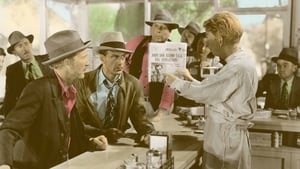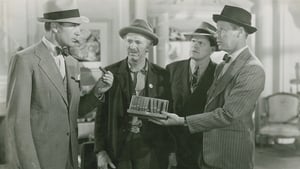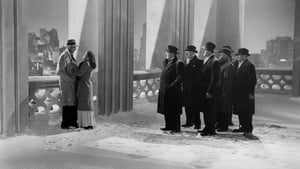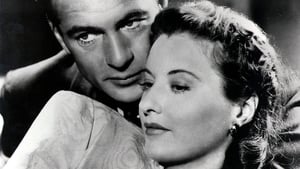Contact: info@alwanfilm.com
Video Sources 0 Views
- Watch trailer
- Meet John Doe

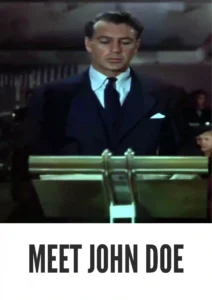
Synopsis
Table of Contents
ToggleReview: Meet John Doe 1941 Colorized – A Heartfelt Tale of Hope and Redemption

Introduction
Meet John Doe, released in 1941, is a poignant drama directed by Frank Capra that captures the essence of American idealism and resilience during a time of great social upheaval. Renowned for its heartfelt performances, stirring screenplay, and timeless themes, this classic film continues to resonate with audiences as a testament to the power of community, compassion, and the human spirit. In this review, we’ll delve into the enduring charm of Meet John Doe and its relevance in today’s world.
Check The Full Colorized Movies List
Check Our Colorized Movies Trailer Channel
Understanding Meet John Doe 1941 Colorized: Director, Cast, and Genre
Directed by Frank Capra, Meet John Doe features a stellar cast led by Gary Cooper and Barbara Stanwyck. The film belongs to the drama genre, known for its exploration of social issues, moral dilemmas, and the complexities of human relationships.
Exploring the World of Meet John Doe 1941 Colorized: Plot and Characters
Meet John Doe follows the story of Ann Mitchell, a struggling newspaper reporter who concocts a fictional character named John Doe to boost circulation. When the public embraces the persona of John Doe as a symbol of hope and unity, Ann is faced with a moral dilemma as she grapples with the consequences of her deception. Alongside her is John Willoughby, a down-and-out baseball player hired to pose as John Doe, whose journey towards self-discovery and redemption forms the heart of the film.
The Art of Film Colorization
While Meet John Doe was originally filmed in black and white, its early colorized version adds a new layer of depth to its heartwarming visuals. The colorization process enhances the film’s nostalgic charm and captures the warmth and humanity of its characters with striking clarity.
Early Colored Films: A Brief History
The history of early colored films is marked by innovation and experimentation as filmmakers sought to enhance the visual appeal of their movies. From hand-tinted frames to pioneering technicolor processes, the evolution of colorization techniques transformed the cinematic landscape, offering audiences a new way to experience the warmth and vibrancy of classic Hollywood cinema.
Meet John Doe (1941) and Its Early Colored Version
The decision to release Meet John Doe in a colorized format was made with the intention of immersing audiences in the nostalgic charm of its Americana setting and enhancing the film’s visual impact. While some purists may prefer the original black and white version, the early colorized edition of Meet John Doe adds a new layer of depth to its heartwarming visuals and captures the timeless themes of hope and redemption with breathtaking clarity.
The Debate Over Film Colorization
The debate over film colorization continues to divide audiences and industry professionals alike. While some argue that colorization breathes new life into classic films and makes them more accessible to modern audiences, others maintain that it compromises the artistic integrity of the original work. As technology advances and filmmaking techniques evolve, the debate over colorization remains a topic of ongoing discussion within the film community.
Examining Meet John Doe (1941) as an Early Colored Film
Viewing Meet John Doe in its early colorized iteration offers audiences a fresh perspective on its nostalgic charm and timeless themes. The colorization process enhances the film’s Americana setting and captures the warmth and humanity of its characters with stunning clarity. As viewers are swept up in the heartwarming journey of John Willoughby and his quest for redemption, they are treated to a visual feast that celebrates the enduring power of hope and compassion.
Influence and Legacy: Meet John Doe 1941 Colorized’s Impact on Cinema
Meet John Doe is widely regarded as a classic of American cinema that continues to inspire audiences with its heartfelt storytelling and timeless themes. Its exploration of social issues, moral dilemmas, and the resilience of the human spirit has left an indelible mark on cinema, shaping the way filmmakers approach storytelling and connect with audiences on a deeply emotional level.
Director’s Cinematic Legacy: Beyond Meet John Doe 1941 Colorized
Frank Capra’s directorial legacy extends far beyond Meet John Doe, encompassing a diverse body of work that includes acclaimed films such as It’s a Wonderful Life and Mr. Smith Goes to Washington. As one of the most celebrated filmmakers of Hollywood’s Golden Age, Capra was known for his ability to craft uplifting narratives that celebrated the triumph of the human spirit over adversity. Meet John Doe stands as a testament to his talent and vision, solidifying his reputation as one of the great auteurs of classic American cinema.
Themes Explored in Meet John Doe 1941 Colorized
At its core, Meet John Doe explores themes of hope, redemption, and the power of community in the face of adversity. Through its heartfelt storytelling and memorable characters, the film offers a poignant reflection on the human condition, reminding viewers of the importance of compassion, empathy, and solidarity in building a better world.
Reception and Controversy Surrounding Meet John Doe (1941)
Upon its release, Meet John Doe received widespread critical acclaim for its heartfelt performances, stirring screenplay, and timeless themes. While the decision to release the film in a colorized format sparked debate among purists, its enduring popularity has cemented its status as a beloved classic of American cinema.
Where to Watch Meet John Doe 1941 Colorized Online
For those eager to experience Meet John Doe for themselves, the film is readily available on popular streaming platforms such as Amazon Prime Video, Google Play Movies, and iTunes. Whether viewed in its original black and white format or its early colorized iteration, Meet John Doe offers a cinematic experience that is both heartwarming and visually stunning.
FAQs About Meet John Doe 1941 Colorized
1. Is Meet John Doe based on a true story?
No, Meet John Doe is a fictional film that explores the timeless themes of hope, redemption, and the resilience of the human spirit. While the film’s storyline may draw inspiration from real-life events, its characters and plot are works of fiction.
2. Who starred in Meet John Doe?
Meet John Doe stars Gary Cooper in the role of John Willoughby, a down-and-out baseball player hired to pose as the fictional character of John Doe. He is supported by Barbara Stanwyck, who delivers a heartfelt performance as Ann Mitchell, the struggling newspaper reporter who creates the character of John Doe.
3. What is the central message of Meet John Doe?
At its core, Meet John Doe celebrates the power of hope, redemption, and the human connection in overcoming adversity. Through its heartfelt storytelling and memorable characters, the film offers a poignant reflection on the importance of compassion, empathy, and solidarity in building a better world.
4. Why was Meet John Doe released in a colorized format?
The decision to release Meet John Doe in a colorized format was made with the intention of immersing audiences in the nostalgic charm of its Americana setting and enhancing the film’s visual impact. While some purists may prefer the original black and white version, the early colorized edition of Meet John Doe adds a new layer of depth to its heartwarming visuals and captures the timeless themes of hope and redemption with breathtaking clarity.
5. What is the legacy of Meet John Doe?
Meet John Doe is widely regarded as a classic of American cinema that continues to inspire audiences with its heartfelt storytelling and timeless themes. Its exploration of social issues, moral dilemmas, and the resilience of the human spirit has left an indelible mark on cinema, shaping the way filmmakers approach storytelling and connect with audiences on a deeply emotional level.
6. Are there any sequels or remakes of Meet John Doe?
No, there have been no official sequels or remakes of Meet John Doe. However, the film’s enduring popularity has inspired countless reinterpretations and homages in various media. Nonetheless, none have captured the heartfelt charm and timeless themes of the original 1941 classic.
7. Where can I watch Meet John Doe online?
For those eager to experience Meet John Doe for themselves, the film is readily available on popular streaming platforms such as Amazon Prime Video, Google Play Movies, and iTunes. Whether viewed in its original black and white format or its early colorized iteration, Meet John Doe offers a cinematic experience that is both heartwarming and visually stunning.
Conclusion
In conclusion, Meet John Doe (1941) stands as a timeless classic of American cinema that continues to captivate audiences with its heartfelt storytelling, stirring performances, and timeless themes of hope and redemption. Whether viewed in its original black and white format or its early colorized iteration, Frank Capra’s insightful direction and the heartfelt performances of the cast offer a cinematic experience that is both moving and visually stunning. As viewers are swept up in the heartwarming journey of John Willoughby and his quest for redemption, they are reminded of the enduring power of hope, compassion, and the human spirit. Meet John Doe remains a beloved classic that continues to inspire and uplift audiences around the world.
